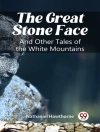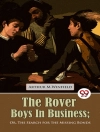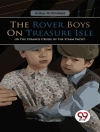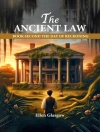In ‘Hyperion, ‘ Henry Wadsworth Longfellow delves into the themes of personal evolution and the European experience, rendered through a lyrical and introspective style. The narrative unfolds as a quest for self-discovery, intertwined with philosophical reflections on love, loss, and the transformative power of art. Set against the backdrop of the early 19th century European landscape, Longfellow employs rich imagery and poetic prose, significantly influenced by the Romantic movement, to explore the inner turmoil of his protagonist, Paul Flemming, who seeks solace and meaning amid the chaos of life. Longfellow, a prominent figure in American literature, was deeply influenced by his own travels and the profound impact of classical literature. His encounters with European culture during his stays in Germany and France fed his desire to bridge the gap between American and European literary traditions. ‘Hyperion’ serves not only as a reflection of his personal journey but also resonates with his belief in the power of imagination and humanity’s shared struggles, reflective of the broader context of American Romanticism. This novel is highly recommended for readers interested in the intersection of autobiography and fiction, as it encapsulates Longfellow’s aspirations and literary mastery. ‘Hyperion’ will appeal to those seeking a philosophical and emotional exploration of the human condition, presented with elegance and depth.
Circa l’autore
Henry Wadsworth Longfellow (1807–1882) was a towering figure in American literature during the 19th century, revered for his lyric poetry, which combined American themes with classical knowledge. Born in Portland, Maine, when it was still part of Massachusetts, Longfellow demonstrated a precocious literary talent. He graduated from Bowdoin College alongside Nathaniel Hawthorne and subsequently spent time in Europe to prepare for a career in academia. He became a professor first at Bowdoin and later at Harvard, perfecting his multilingual expertise. Longfellow’s body of work transcends the simple demarcations of genre, seamlessly blending the epic with the tender lyricism. His work encompasses a spirit of universality and moral clarity that mirrored the young nation’s ambition and optimism. ‘Hyperion’ (1839), a romantic novel steeped in a European sensibility, showcases Longfellow’s narrative prowess and his keen appreciation for European culture and lore. While ‘Hyperion’ is not as widely celebrated as his poetry, it stands testament to Longfellow’s versatility and his earnest exploration of the depths of human experience. With a literary style marked by sentimentality and a proclivity toward verse that often employed a fireside narrative charm, Longfellow’s poetry garnered great public affection, ensuring his place in American literary tradition. Among his enduring contributions are ‘The Song of Hiawatha’, ‘Evangeline’, and ‘Paul Revere’s Ride, ‘ which remain staples within the canon of American poetry.












